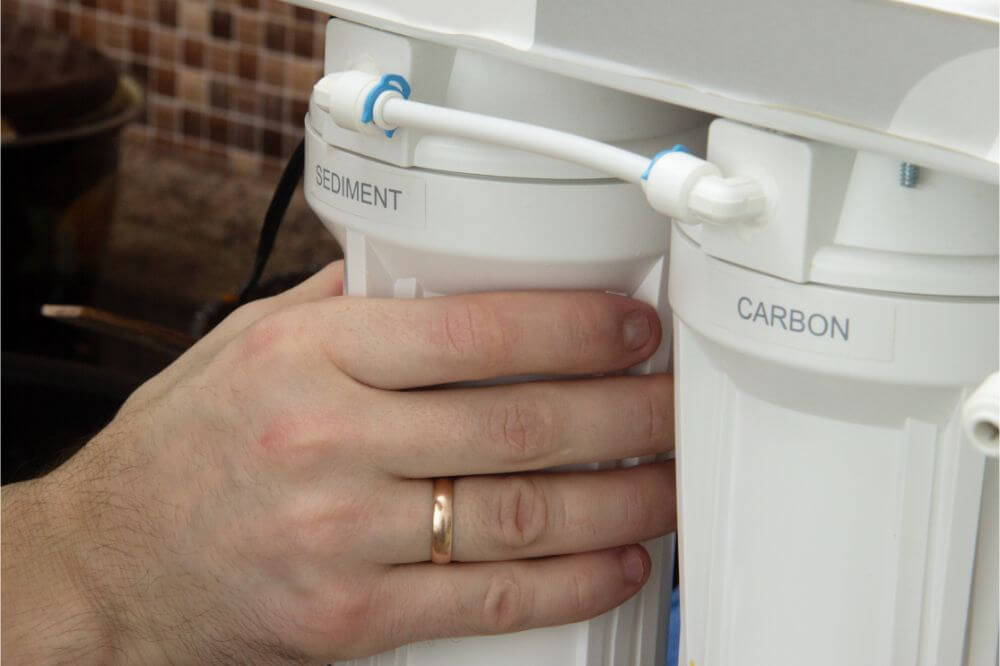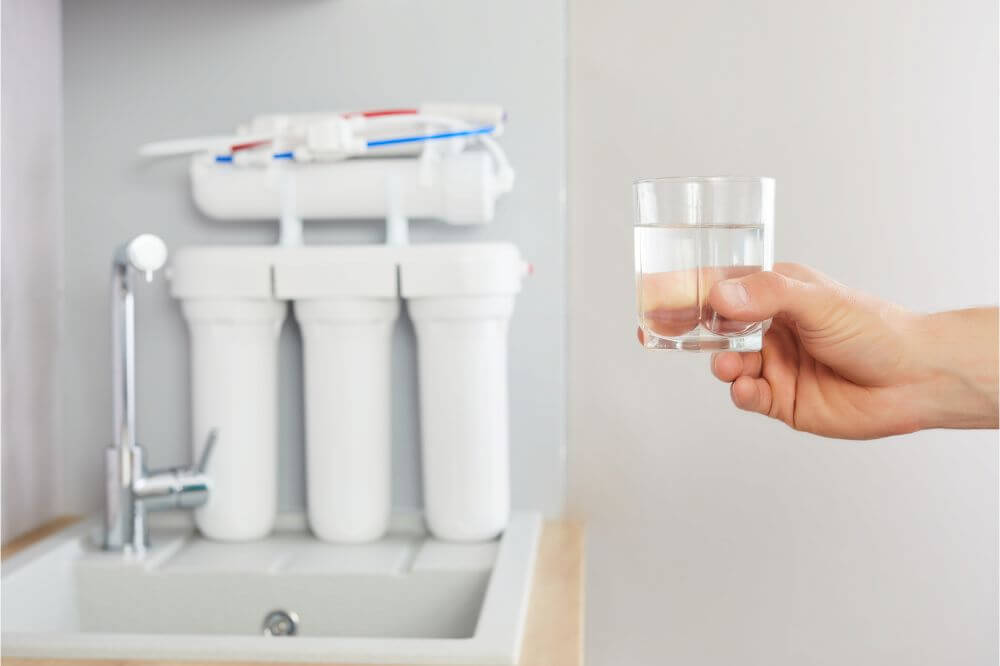In a world constantly battling climate change and pollution, clean water is becoming one of the most valuable resources. Reverse osmosis is one of the best methods to clean water and ensure water does not have contaminants. But, how do reverse osmosis systems work?”
Understanding reverse osmosis is vital to make sure you get clean water when you need it. The following article aims to show you what reverse osmosis is and how reverse osmosis systems work. You should then understand how water is cleaned and made drinkable.
What Is Reverse Osmosis?
Reverse osmosis is the process of feeding water through a semipermeable membrane. The water will start on one side, known as the feeding zone, and pass through to the less concentrated side. The less concentrated side is where most of the chemical contaminants have been removed to give you clean drinking water.
When looking at the semipermeable membrane, you will notice that the device has several small pores.
These pores will block out some of the contaminants, but water molecules are small and enough to move through. Pressure is often applied from one side to push the water through the membrane to start the cleaning process.
Breakdown of the Reverse Osmosis System
Every reverse osmosis system has the same makeup. The methods might occasionally look different, but essentially they operate on the same principles. We have broken down some of the most essential features. These components are what make a reverse osmosis system work.
Sediment Filter
The sediment filter is one of the first things that the water will pass through, and it is designed to remove larger dirt and dust particles.
Carbon Filter
The carbon filter removes the volatile organic compounds (VOCs) in the water. However, it is also responsible for removing chlorine and contaminants that could give water a bad taste.
Semi-Permeable Membrane
The total dissolved solids (TDS) can be some of the most difficult compounds to remove, but the semipermeable membrane can remove these materials.
These are three of the filters used, but you can add more filters. You can find custom reverse osmosis systems with different filter setups that should remove even more harmful compounds from the water.

How Does a Reverse Osmosis System Work?
Reverse osmosis systems are designed to remove contaminants and sediment from water. However, when you look closer at the system, it is broken up into various stages. If you want to understand the reverse osmosis process, you need to break down these stages.
Step 1: Prefiltration
The carbon and the sediment filters are the most critical filters for starting the process. The first step is prefiltration; the water will pass through the sediment and carbon filter to remove some of the dirt and chlorine. It specifically removes contaminants that could damage the RO membrane.
Step 2: Reverse Osmosis Process
In the next step, water will start seeping through the reverse osmosis membrane. This step will dissolve as many of the particles as possible. Particles that can only be seen through an electronic microscope will be dissolved.
Step 3: Storage Tank
Every reverse osmosis system will have a storage tank. The filtration system should continue to clean the water until the storage tank is full.
Step 4: Post-Filtration
Once you are done with the cleaning process, you can drink the water. Generally, there is another filter located near the faucet to make sure the water is clean. Many people consider it the filter that will ‘polish’ the water.
Benefits of Reverse Osmosis
There are many benefits aside from clean water. Here are some of the main benefits that you can expect from a reverse osmosis system.
Dissolves Harmful Contaminants
The process removes all the dirty contaminants found in everyday water.
Reduced Sodium
Whether you are on a strict diet or not, having too much sodium can be very bad for your body and lead to hypertension.
Removes Bad Tastes And Odors
If you love drinking water, nothing can be more frustrating than dealing with bad tastes and odors. The RO process should remove the bulk of these issues.
Easy to Install
The reverse osmosis machine might seem expensive, but it is a once-off investment that will save money in the long run, and it is easy to install. The system can be installed under your sink.
Environmentally Friendly
When comparing reverse osmosis to bottled water, the reverse osmosis system is safer for the environment than the plastic in bottled water.
Conclusion
Many people wonder how reverse osmosis systems work, but we hope this article has explained the most essential information. Let us know in the comment section if you think reverse osmosis is the best way to clean water and remove contaminants.

